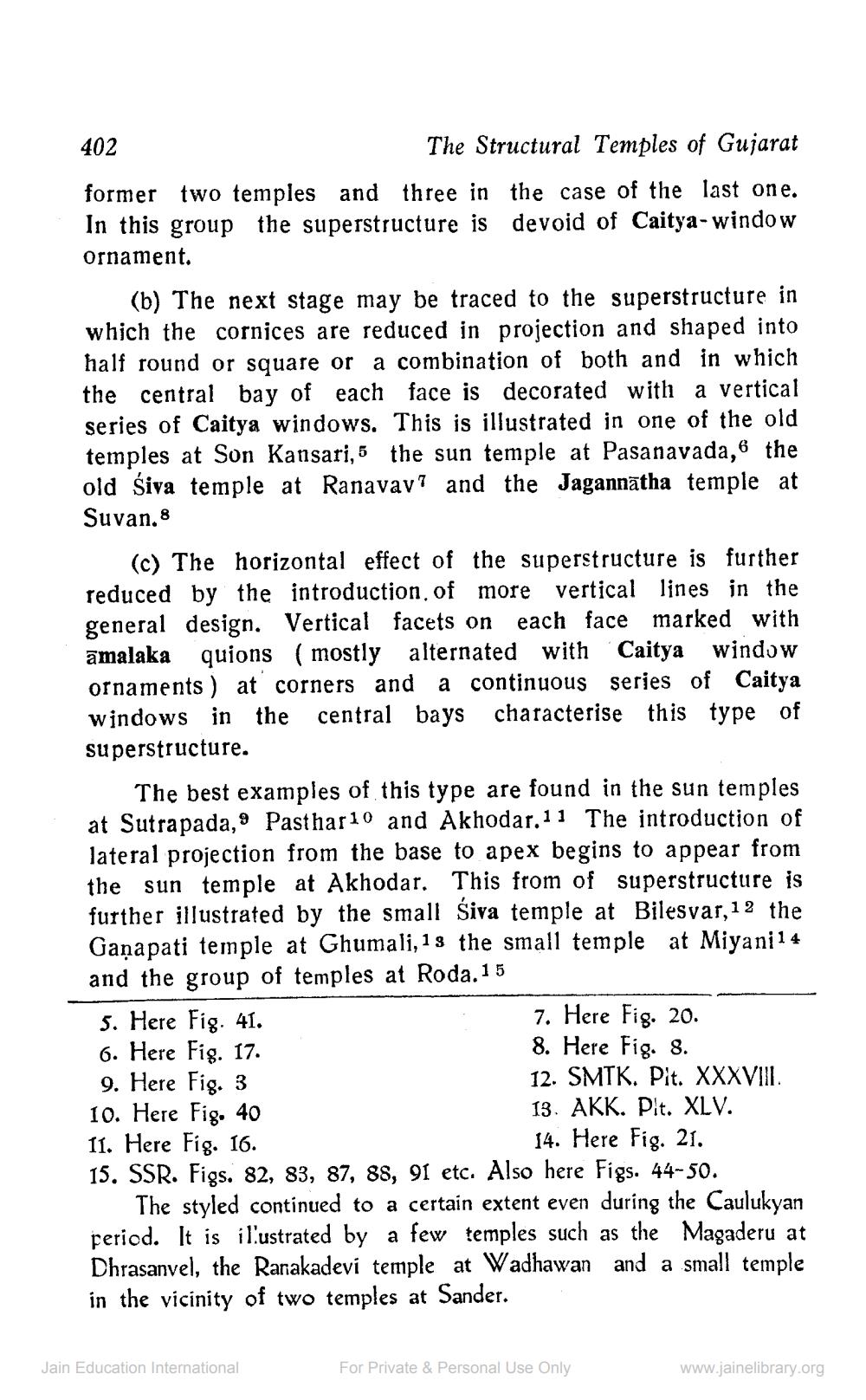________________
402
The Structural Temples of Gujarat former two temples and three in the case of the last one. In this group the superstructure is devoid of Caitya-window ornament.
(b) The next stage may be traced to the superstructure in which the cornices are reduced in projection and shaped into half round or square or a combination of both and in which the central bay of each face is decorated with a vertical series of Caitya windows. This is illustrated in one of the old temples at Son Kansari, 5 the sun temple at Pasanavada,6 the old Śiva temple at Ranavav? and the Jagannātha temple at Suvan.8
(c) The horizontal effect of the superstructure is further reduced by the introduction of more vertical lines in the general design. Vertical facets on each face marked with amalaka quions (mostly alternated with Caitya window ornaments ) at corners and a continuous series of Caitya windows in the central bays characterise this type of superstructure.
The best examples of this type are found in the sun temples at Sutrapada,9 Pasthar10 and Akhodar.11 The introduction of lateral projection from the base to apex begins to appear from the sun temple at Akhodar. This from of superstructure is further illustrated by the small Śiva temple at Bilesvar, 12 the Ganapati temple at Ghumali, 18 the small temple at Miyani 14 and the group of temples at Roda.15 5. Here Fig. 41.
7. Here Fig. 20. 6. Here Fig. 17.
8. Here Fig. 8. 9. Here Fig. 3
12. SMTK. Pit. XXXVIII 10. Here Fig. 40
13. AKK. Pit. XLV. 11. Here Fig. 16.
14. Here Fig. 21. 15. SSR. Figs. 82, 83, 87, 88, 91 etc. Also here Figs. 44-50.
The styled continued to a certain extent even during the Caulukyan period. It is illustrated by a few temples such as the Magaderu at Dhrasanvel, the Ranakadevi temple at Wadhawan and a small temple in the vicinity of two temples at Sander.
Jain Education International
For Private & Personal Use Only
www.jainelibrary.org




